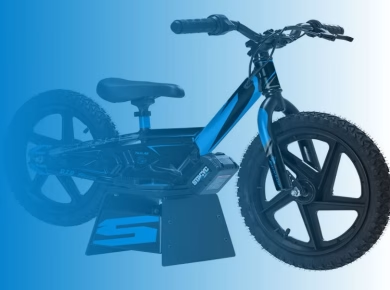In any kind of surgery, human or veterinary medicine, the role of every instrument can be utilized. Yet there is one instrument that’s usually overlooked: operating scissors. They appear to be uncomplicated, yet improper usage can cause tissue damage, compromised healing, and sometimes serious complications.
The reality is, even seasoned professionals can create minor but expensive errors with scissors. The silver lining? The errors are straightforward to avoid once you understand what to watch out for.
This blog highlights the most common errors associated with using scissors, and, most importantly, how to avoid them.
What Are Operating Scissors, and Why Do They Matter?
Operating scissors are used to cut soft tissues, dissect during surgery, or even remove sutures. You’ll find them in nearly every surgical kit because they’re incredibly versatile. Some are straight; others are curved. Some have blunt ends, while others are sharp.
Different types include:
- Mayo scissors: stronger and better for thick tissue
- Metzenbaum scissors: lighter and used for delicate tissues
- Straight scissors: great for cutting at the surface
- Curved scissors: provide more control for deeper tissue
Making the right choice in scissors and using them correctly matters a lot, not only in the ease with which a procedure goes, but in how well the patient heals.
Here are a few common mistakes that most professionals make while using the operating scissors:
Mistake #1: Employing the Incorrect Type of Scissors
One of the most frequent blunders is to use the incorrect type of scissors for the purpose.
Typical Issues:
- Using Metzenbaum scissors to thick tissue, which causes them to bend or become dull.
- Choosing blunt scissors when a sharp tip is required
- Taking curved scissors for jobs requiring a straight edge
How to Improve:
- Use Mayo scissors for thick tissues and Metzenbaum for delicate dissection.
- Choose the tip type (sharp or blunt) according to the task: don’t settle for less.
- Store different types separately so it’s quick and easy to select the correct one.
Mistake #2: Forcing Dull or Bent Scissors
If the scissors are difficult to use, they’re likely to need sharpening or alignment. Forcing blunt scissors can harm both tissue and the instrument.
What Happens:
- You exert extra effort, cramping your hand
- Cuts aren’t as clean: more tissue trauma
- Blade edges get more damaged
How to Avoid:
- Check your scissors before each use
- If they won’t cut cleanly, don’t push; have them serviced
- Keep scissors stored carefully to prevent misalignment or bending
Mistake #3: Omitting Routine Maintenance
Even the best scissors dull with use, particularly if neglected.
Oversights:
- Omitting lubrication of joints following sterilization
- Permitting moisture to lead to rust
- Keeping scissors loose in a tray where tips are subject to damage
What You Should Do:
- Dry and clean scissors after each use
- Apply instrument-grade lubricant to maintain smooth motion
- Store in safety cases or slots
- Do not store in loose trays
Mistake #4: Using Operating Scissors for Non-Surgical Procedures
Let’s be honest: Sometimes it’s tempting to grab the nearest pair of scissors to cut gauze, tape, or packaging. But using operating scissors this way wears them down fast.
Risks Include:
- Blade dulling from cutting synthetic or thick materials
- Risk of contamination if scissors are reused without sterilization
- Tip damage from cutting hard surfaces
Better Approach:
- Have designated utility scissors for non-sterile tasks
- Keep surgical scissors for surgery only
- Educate your OR team on proper instrument use
Mistake #5: Insufficient Training or Familiarity
Not every member of a surgical team might be as comfortable with the scissors they’re handling. This creates hesitation, mistakes, or destruction, particularly under stress.
How It Impacts Surgery:
- Awkward handling or loss of control
- Slower surgeries due to confusion
- Mixed results between team members
What Helps:
- Offer frequent hands-on training
- Allow team members to practice with actual tools, not photographs
- Encourage team discussion of instrument preference and use
Why It’s Worth Using The Right Operating Scissors
When used properly, operating scissors make surgeries smoother, quicker, and more secure. Clean cuts minimize trauma, healing becomes easier, and you feel more confident.
Even better, well-maintained scissors stay in service longer: saving money in the long term and preventing delays caused by equipment failure.
Conclusion
Surgery is a high-risk profession, and every tool counts. By learning to avoid these common pitfalls when using operating scissors, you both protect your patients and better take care of your instruments and yourself.
FAQs
What is the function of operating scissors in surgery?
They are used to incise tissue, dissect during operations, or cut sutures. Various types exist to perform different functions based on tissue and depth of surgery.
How do Mayo and Metzenbaum scissors differ?
Mayo scissors are heavier and for thick or dense tissue. Metzenbaum scissors are lighter and best for soft or delicate tissue dissection.
How do I know if my operating scissors are dull?
If they don’t cut cleanly or need more pressure, they probably need to be sharpened. Inspect for nicks and uneven blade placement also.
Can scissors that are used for surgery be used again?
Yes, if sterilized properly and cared for. But overuse without sharpening can make them less efficient.
Are curved scissors preferable to straight ones?
The preference of each scissor varies with the procedure. Curved scissors are more suitable for deeper, more accurate cuts, whereas straight scissors are employed for surface work.
Read Next:
- Starting A Medical Billing Business – How To Get Clients
- Revolutionizing Healthcare: How Technology Is Changing Medical Diagnoses







